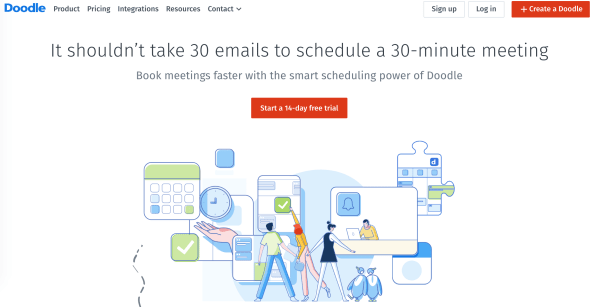
The reputation management industry has come a long way since the BIA Kelsey Group predicted that it would become a $5 billion industry sector by 2016. Indeed, there are more review management solutions, sentiment analysis monitoring services, and agencies engaged in ORM than ever before!
However, I am not certain that I would call online reputation management a “mature” industry, yet. Search algorithms have become more sophisticated, making search engine optimization of positive content more challenging to supplant negative items in search. Social media platforms, responsive to criticisms for enabling astroturfing in politics, have tightened security such that it is more challenging for agencies to manage accounts on behalf of reputation clientele. Laws protecting major online companies from liabilities for assisting defamation victims continue to be entrenched. And, personal and private data has become more and more exposed despite some efforts to reduce the public’s exposure.
All of this has made reputations more vulnerable to serious damage and has made reputation management more difficult in terms of clean-up of issues or even proactive development.
But, there are some positive things happening, too, so things are not all doom-and-gloom. Consciousness about online harassment, bullying, extortion and sextortion are on the upswing. The FBI and the Department of Justice have taken more of an interest in helping victims in such situations, and local law enforcement agencies have been increasing their capabilities for assisting in such situations. (See the California Attorney General’s Cyber Exploitation resource, for example.)
So, I have a few predictions for what may be in store for online reputations in 2020 — prepare yourself and prepare your company for what is one of the most important aspects of personal and corporate identity.
2020 predictions for online reputation management
1. SEO will continue to become more difficult for improving and controlling online reputations. My prediction 14 years ago that the practice of SEO might become eclipsed by user-centered design has largely come true. Most respectable SEO consultants now incorporate usability factors and user experience into large portions of their analysis and recommendations, in addition to search-oriented technical elements. Simple methods and tricks for manipulating search engines to rank webpages higher have largely been replaced by solid, mainstream marketing practices combined with a user-centered design focus and solid technical website construction. Further, the advent of search engines’ machine learning processing has made website ranking determinations far more holistic in nature — making it hard to tell what factors are ones that tip the decision as to whether one page outranks another or not. Ironically, aspects of reputation are now search ranking factors, so SEO practitioners need to pay attention to reputational elements as part of holistic optimization efforts.
2. Social media profiles will continue to grow in importance for one’s online identity. Not only do well-developed and actively-maintained social media profiles tend to rank advantageously in search engine results, but users seek them out for individuals and companies when exploring online identities that are new to them. For individuals, simply hiding one’s social media profiles does not really cut it anymore when potential employers and business partners are seeking information. And, consumers deeply desire access via social media profiles to communicate directly to companies — neglecting a company’s social media presence can result in increased consumer frustration, and result in more negative online reviews and ratings.
3. Laws will continue to favor large internet companies, protecting them from liability for content produced by third parties that may appear on their platforms. Silicon Valley lobbyists continue to hold sway in Washington and in state legislatures, keeping laws very friendly towards the large internet companies, resulting in keeping them largely non-liable for helping individuals and organizations remove false and defamatory information online. Section 230 of the Communications Decency Act was enacted in 1996 specifically to save internet companies on costs, while the U.S. legislature knew it would result in collateral damage for small companies and individuals. Arguably, it is time for Section 230 immunity to be changed, but there has been little movement to do anything that would substantially help people. While you might believe that our European counterparts have it better due to their “right to be forgotten” laws, this online “wild west” free-for-all that is maintained in the U.S. negatively impacts anyone in the EU that does business with America because their right to be forgotten is limited to searches conducted within their countries — people in the U.S. can still see contents in search that is no longer relevant or false about them.
4. Business review monitoring will become easier and less costly for companies. There are now multiple companies that provide some degree of review monitoring services across multiple review sites and for multiple business locations. What was once a difficult and costly effort for major chain store companies is now far easier to do from a central office. The increasing number of providers of these services is also starting to enable lower costs as competition in the marketplace produces more options.
5. Public relations and crisis communications will rise as even more important strategic components for online reputation, as opposed to strategies of only ignoring-or-displacing of negative items online. Public relations has been a solid discipline since before the internet, of course, but companies and individuals are again recognizing its value now after many modern companies attempted to skate by without professional staff or external support for public communications. Many have tried a do-it-yourself approach to this, and most fail miserably when trying to position themselves and to respond to public relations crises. Responding with integrity and conveying genuine concern can make all the difference between rapid or eventual reputation recovery in the public’s consciousness, or continuing with a damaged and tarnished reputation that hampers one’s performance in nearly any arena.
6. Professional online reputation management costs will drop within reach of more individuals and small companies. Let’s face it: professional online reputation management has largely been only a service available to individuals and organizations with larger amounts of resources. But, the increasing number of companies operating in the reputation industry is increasing competition, which will result in lower prices for consumers, and the flexibility and functionality available through internet technologies continue to develop, simplifying and making more efficient various aspects of online reputation management services. These factors will drive costs downward. Lawsuits remain one useful and effective option for some types of defamation, trademark infringement and online harassment, but that option remains costly and will be slower to change without further reforms of laws related to online reputation and less costly access to legal relief. Still, while litigation continues to have some major cost barriers, a lot of relief can be obtained more rapidly and cheaper through a combination of SEO, social media management, public relations, crisis communications and strategic internet content development.
7. Proactive online reputation management becomes more important than ever. As the internet became the go-to source for information about everything, one’s internet reputation became more important than ever. That trend has only increased over time, and one can declare 2020 as truly the moment when one’s internet reputation now outweighs nearly every other information source. As such, proactive online reputation management is now vital, and a core piece of best practices for marketing — with a weak and vulnerable online reputation, one is a sitting duck for any crisis, any bad review, and any crank with an axe to grind. Financial analysts are paying more attention to online reputation, and will increasingly check out whether companies are making efforts to manage their identities online in order to proactively protect themselves from any negative event. Do we even need to mention that HR departments check one’s reputation online before making hiring decisions, and people look up individuals for social reasons as well — including for dating, as well as for other social interactions?
As a sort of “bonus” prediction, the #MeToo Movement blew up in a massive way in 2019 — one can easily predict that this trend will continue to grow, and there seems little to stifle it. In the sense that bad behavior deserves to be called out, and that people should feel empowered to speak out against harassment and abuse, the #MeToo movement is a good thing. In this information age and time of growing, ubiquitous surveillance, it is harder to hide bad behavior, and people’s own actions will out them, more and more. So, expect the awareness created through the #MeToo movement to empower many people to speak out and publicize moments when they are mistreated, and these reports will affect individuals and institutions that are called-out. As people are aware of this societal shift, also expect organizations to become increasingly diligent about improving their policies for dealing with such claims, and responding to the reputational damage fallout. We already see this when companies rapidly suspend those accused, pending investigations, and fire those found to be in noncompliance with corporate policies.
Following reputation management best practices, one can build a robust online reputation and recover from past reputation damage. Focus on making 2020 your best reputation year, ever.
Source: Search Engine Land




















 First Impressions Go Digital
First Impressions Go Digital 



